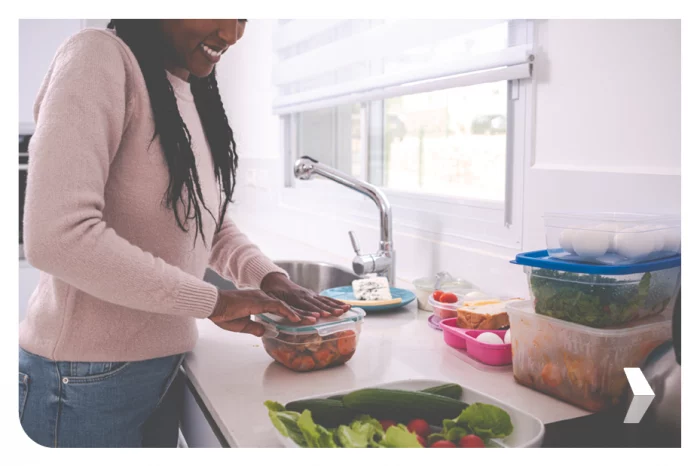Thanksgiving Cheat Sheet: How Long are Leftovers Good For?
November 15, 2021 — 3 min read
For many families, the best part of turkey day isn't the meal itself--it's the feast that comes after! However, it's important to remember to store and reheat properly. Review these tips to ensure the tastiest leftovers possible.
How to Store Thanksgiving Leftovers
- If possible, store your leftover food within two hours of cooking and serving it. Don't let it sit out too long--it's okay to put warm food into the refrigerator.
- If you're planning to freeze your food, use freezer- or storage-specific plastic bags and wrap to resist freezer burn.
- When packing leftovers, divide your food into serving-size portions--this will help you avoid reheating more food than you intend to eat later on. It is safe to reheat your food multiple times, but the quality will decrease every time you do it.
- Bread will dry out rapidly--after a day or so in the pantry or up to five days in the fridge, eat it, freeze it, or prep it into crumbs. If you choose to freeze it, wrap it in foil and then plastic wrap, so it can go into a pre-heated oven once the plastic is removed. Store the wrapped bread in a plastic bag with the air forced out.
- Throw out perishables that won't keep well, such as salads that could wilt--hearty greens, such as cabbage or kale, may keep for up to three days.

How Long are Leftovers Safe in the Refrigerator or Freezer?
In general, leftovers will stay fresh in the refrigerator for two to four days. If you will be storing leftovers beyond this point, put them in the freezer--once they're in the freezer, they're good for up to six months. Reference the checklist below to ensure fresh leftovers for weeks or months to come.

Pro Tip: If you think you may forget to take your food out of the refrigerator or freezer on time, use the FoodKeeper app to set up reminders. The app includes additional guidelines for safe food storage and preparation.
Reheating Tips
- While it is safe to heat frozen leftovers without thawing, it will take longer--use a food thermometer to make sure it reaches 165?F.
- To ensure top quality and taste, reheat sauces, soups, and gravies by bringing them to a rolling boil, preferably on the stove.
- When reheating in the microwave, cover and rotate the food to help it heat through evenly. For meats, you may want to add liquid, such as chicken or turkey stock. Moist heat will help eradicate harmful bacteria and ensure uniform cooking.
- Contact the USDA Meat and Poultry Hotline at 1-888-MPHotline, or online here, with additional questions or concerns.
Are you ready to begin making holiday traditions in your own home? No need for the wishbone this year--our Mortgage Advisors are here to help! Reach out today to learn more.
Keywords:
Categories
Archives
Recent Posts
You bring the dream. We'll bring the diagram.
There’s a financing solution for just about every situation.
I felt like I was treated like family, great communication and helping me with any questions I had.

You bring the dream. We'll bring the diagram.
There’s a financing solution for just about every situation.
Where does your sun shine? Find your local advisor.
Enter your city or state to see advisors near you.
